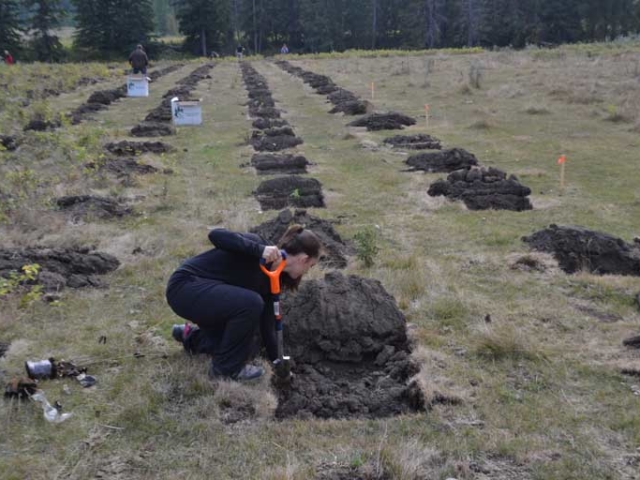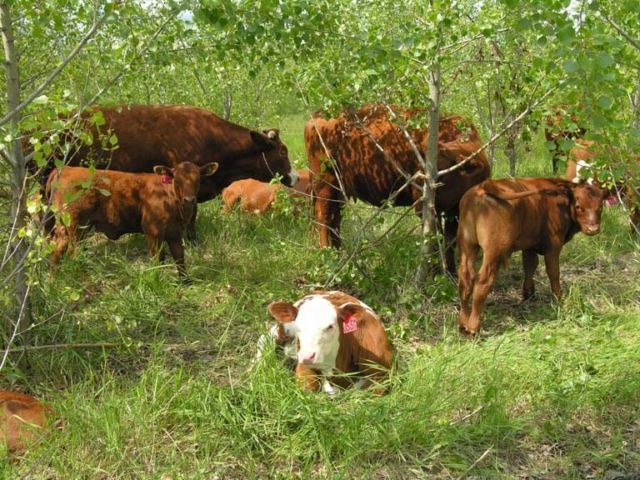Peek A Boo, I See You Wild Mushrooms
By: Maria Votsis
Exploring nature in the spring and autumn months can be so exciting due to the possibilities of wild mushrooms emerging from the ground. The vast amount of colours, shapes and sizes is astonishing and fun to observe when noticed. This post will highlight some interesting mushrooms that are located in Alberta, which can be found and observed – but are not for eating! The sneaky thing about wild mushrooms is that they can look very similar to other mushrooms that may be poisonous, so remember never eat a mushroom that you cannot positively identify.

Pig Ear Mushroom
Mushrooms have been on earth for approximately 130 – 200 million years, after the first flower had formed. Mushrooms form relationships with trees and plants, helping each other through vast underground networks. Trees do not need fungi to survive. However, without the assistance of many trees, many fungi would not be able to thrive. Many wild mushrooms are dependent on trees and have developed a mutual relationship, allowing for trees to reap rewards as well. Lucky for the tree, it is just an added benefit. What happens is fungi starts to grow and bond beside the roots of trees, allowing for sugar to be transferred from the roots to the fungi to eat. In turn the fungi is able to provide the roots with nitrogen and phosphorus, which are essential for tree growth.
The connection between fungi and tree roots has created the ability to transfer information from tree to tree. Signals are able to be sent through the chemicals that the fungi absorb from the trees and are transferred to other trees in the area. This allows for other trees to emit chemicals and hormones to protect themselves from predators, such as bugs. Only with the help of fungi attaching itself to the roots of trees are they able to communicate to their neighbors, allowing them to send out warnings. Through this mutual relationship, fungi have been able to in turn grow in all sorts of ways that are natural and fun to see in nature.
Mushrooms are comparable to fruit as they are the end product of a thriving organism. Similar to how fruit have seeds, spores are located on different areas of wild mushrooms as well. There are three main styles, but are not limited to are; gills, teeth, or pores. Below I will dive deeper into these spore types and a few others to show you what you may be able to discover on your next hike in Alberta! If you take a second to slow down your pace and zoom in to the world around you, you never know what you may encounter.
Pig’s Ears are a mushroom that is within the same family as Chanterelle Mushrooms. This might have been noticed when looking at the image above of a wild Pig Ear Mushroom. They vary due to their color. Pig Ear Mushrooms can develop a purple hue to them that makes them distinctly different from their gold or yellow counterparts. The spores are located under the cap and along the stem that resemble gills and oddly enough pig ears. They grow on mossy ground or within coniferous forests. This wild mushroom is edible, but I do not recommend picking and eating them on site.

Hedgehog Mushroom

Hedgehog Mushroom Spines
Hedgehog Mushrooms are very clever with their name since the spores on this fungi are located underneath the cap. The teeth that come down make it look strangely similar to how a hedgehog’s back would look like. The mushroom cap is naturally tan but can bruise orange with a smooth stem. This mushroom is tricky when finding it upon any adventure, since it has so many lookalikes (easily five, according to Northern Bushcraft). Hedgehog mushrooms are edible and also a family member of the Golden Chanterelle Mushroom. What is nice about this species is that it will tend to grow around the same spot every year. An example of what Hedgehog Mushrooms look like underneath their cap and from a distance are shown above.

Hexagonal-Pored Polypore Mushroom

Hexagonal-Pored Polypore Mushroom
Hexagonal Pored-Polypore is a mushroom that grows on decaying hardwood trees. Underneath the cap the spores look like the pores that can be found on coral in the ocean. It is quite beautiful to look at. These cool little mushrooms can be found in Alberta and can be up to ten centimetres in size. Above there are two images of what Hexagonal Pored Polypore Mushroom would look like if you encountered one in nature. Would honestly be such a great treasure to find on a hike!

Jelly Ear Fungus
Then we have some mystery mushrooms hiding in Alberta, that you may never have known existed. An example of some hidden gems would be the Jelly Ear fungus! I know, silly name, but such an unusual little specimen, as you can see on the left here. It does not have pores similar to what a mushroom would look like, but nevertheless it is still a fungus. This fungus can be found growing on decaying trees, really making you think if the trees can listen or hear what’s around.
Mushrooms have become to our naked eye these tiny, quiet, organisms that are normalized to be what we see in the grocery store, but they are so much more than that! There is so much to say about them, far more than I have said in less than 1000 words. But if you want to enrich your next hike or walk in nature take a closer look, you never know what you will stumble upon. Nature is full of hidden treasures if you just zoom in close enough.
Next time you’re at your local Farmers Market, take a look to see if there are any foraged wild mushrooms from your area! Maybe you’ll even find one of these mentioned above!
References
https://www.britannica.com/science/fungus/Outline-of-classification-of-fungi
https://sciencing.com/relationship-of-mutualism-between-a-mushroom-a-tree-12541129.html
https://www.albertamushrooms.ca/about/what-are-mushrooms/
https://www.ediblewildfood.com/pigs-ear.aspx
https://northernbushcraft.com/mushrooms/hedgehogMushroom/ab.htm
https://ultimatemedicinalmushrooms.com/hedgehog-mushroom/
https://www.inaturalist.org/guide_taxa/517494
https://northernbushcraft.com/mushrooms/jellyEar/ab.htm
https://wordpress.org/openverse/photos/66da7b29-e8cf-49c4-9a28-903be39c0902
https://wordpress.org/openverse/photos/c253666b-97f5-4630-a68b-92f317e84d92
https://wordpress.org/openverse/photos/09ac53c6-3d8b-485b-ae30-24c4c296661a
https://wordpress.org/openverse/photos/0b5c3490-19b8-4650-b497-2241349fb38b
https://wordpress.org/openverse/photos/2b2ec64c-6f8b-417b-8d88-4ff50581f6a3
https://wordpress.org/openverse/photos/1ce60019-063d-43d2-9c7d-57531a0d6363







